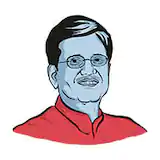Budget Timeline (1991 - 2023)
From Manmohan Singh to Nirmala Sitharaman, a timeline showcasing the highlights of the Union Budgets since the landmark of 1991 that ushered the era of economic liberalisation for India and reshaped the economy of the nation.
- 1991
Manmohan Singh
1991 ushered the era of economic liberalisation for India. Import-export policy was revamped and import duties slashed to introduce the Indian industry to competition from abroad. The government also reduced the peak customs duty from 220 percent to 150 percent.

- 1992
Manmohan Singh
The Budget aimed at near full employment in a span of ten years. The ’92 Budget called for reduction in fiscal deficits. The government aimed at increasing tax and non-tax revenues. The finance minister also hiked the defence budget from Rs 16,350 crores to Rs 17,500 — a steep rise of 7%.

- 1993
Manmohan Singh
The Budget extensively discussed agricultural credit with an aim to promote rural development. "Our strategy will gradually reduce high levels of protection to the Indian industry. It will moderate the high industrial prices which the farmer has to pay," said the finance minister in his Budget speech.

- 1994
Manmohan Singh
The 1994-95 budget witnessed service tax being introduced at the rate of 5 percent as the sector was contributing 40 percent to the national GDP. The primary aim was to widen the indirect tax base. The tax was initially levied on telephones, non-life insurance and stockbrokers.

- 1995
Manmohan Singh
1991 ushered the era of economic liberalisation for India. Import-export policy was revamped and import duties slashed to introduce the Indian industry to competition from abroad. The government also reduced the peak customs duty from 220 percent to 150 percent.

- 1995
Manmohan Singh
Incentives for software exporters was slowly done away with. This was brought about to improve the ratio of taxes to GDP and promote India as a major software development center globally.

- 1996
Manmohan Singh
The Budget revolved around 100 percent coverage of provisions for safe drinking water, 100 percent coverage of primary health centers, universalisation of primary education, public housing assistance to all shelter-less poor families, extension of mid-day meal schemes, road connectivity to all villages and habitations and streamlining the Public Distribution System meant for families below the poverty line.

- 1997
P Chidambaram
The 1997 Budget made tax rates moderate for individuals as well as companies. It allowed companies to adjust MAT paid in earlier years against tax liability of subsequent years. The government also launched the Voluntary Disclosure of Income Scheme (VDIS), to uncover black money.

- 1998
P Chidambaram
Personal income tax collections increased many folds and VDIS garnered about Rs 10,000 crore. Higher disposable income in the hands of taxpayers helped generate demand. The incremental tax revenues were leveraged to increase public expenditure on social welfare and infrastructure.

- 1999
Yashwant Sinha
Process to restore fiscal health of nation by reducing revenue and fiscal deficits was initiated. Several programmes were taken up by the human resource development ministry to empower the poor.

- 2000
Yashwant Sinha
Incentives for software exporters slowly done away with. Transfer pricing regulations also introduced, which required transactions between associated enterprises to be transparent.

- 2001
Yashwant Sinha
Intensification of infrastructure investment, continued reforms in the financial sector and capital markets, deepening of structural reforms were some of the key aspects. Reduction in non-productive expenditure and rationalisation of subsidies was undertaken. The government also aimed at acceleration of the privatisation process and restructuring of public enterprises along with widening of the tax base.

- 2002
Yashwant Sinha
Two percent earthquake tax abolished. A fine of Rs 10,000 announced on detection of false PAN. Multiplex theatres in non-metro cities were given a tax relief. This was also the year when cell phones and cordless phones got cheaper.

- 2003
Yashwant Sinha
The government introduced a new health insurance scheme in which an individual could get insurance with a premium of only Re 1/day for 365 days. A family of five could get insured for Rs 1.50/day and Rs 2/day for a family of seven, including dependants and could be eligible for a benefit of Rs 30,000 in case of hospitalisation. In the event of death, the family would get Rs 25,000.

- 2004
Yashwant Sinha
Amid rising concerns over poverty in India, 2 crore families below the poverty line were planned to be covered under subsidised PDS. Long term capital gains tax was abolished and short term capital gains tax reduced to 10%. The government also allocated Rs 259 crore on AIDS control programmes.

- 2005
P Chidambaram
Direct taxation was the major highlight of this Budget. Income up to Rs 1,00,000 per annum was exempted from tax. Income between Rs 1-1.5 lakh was taxed at 10%, Rs 1.5-2.5 lakh income at 20% and income above Rs 2.5 lakh was taxed at 30%. The government also proposed 50 paise per litre cess on petrol and diesel to fund highways.

- 2006
P Chidambaram
P Chidambaram, Minister of Finance of the UPA II, for the first time set out with implementation of Goods and Services Tax (GST) by April 1, 2010.

- 2007
P Chidambaram
Exemption limit for women for personal tax was increased to Rs 1,45,000 and for senior citizens to Rs 1,95,000. Dividend distribution tax rose from 12.5 percent to 15 percent.

- 2008
P Chidambaram
Total plan spending in 2008 was pegged at Rs 2.4 trillion, while non-plan spending was at Rs 5.07 trillion. The government waived debts of small farmers and the total cost of the farm debt waiver was Rs 600 billion.

- 2009
Pranab Mukherjee
Allocation under Jawaharlal Nehru National Urban Renewal Mission (JNNURM) was stepped up by 87 percent to Rs 12,887 crore. Allocation for housing and provision of basic amenities to urban poor was enhanced, this included provisions for Rajiv Awas Yojana (RAY), a new scheme.

- 2010
Pranab Mukherjee
The Budget for financial year 2010-11 aimed to revive the agriculture sector but mentioned no incentives for organic fertilizers and sustainable farming. Monetary policy measures were expected to further moderate inflation in the coming months.

- 2011
Pranab Mukherjee
Monetary allocation for the social sector was raised by 17 percent to Rs 1,60,887 crore along with allocation for Bharat Nirman programme increased by Rs 10,000 crore. Plan allocation for education was hiked by 24 percent and health by 20 percent. Eligibility for old age pension scheme was reduced from 65 years to 60 years.

- 2012
Pranab Mukherjee
Pranab Mukherjee increased and facilitated poor people’s access to credit. The aimed monetary target for agricultural credit was raised from Rs 1,00,000 crore to Rs 5,75,000 crore. The Budget brought about private sector reforms through various fiscal initiatives like amending the Fiscal Responsibility and Budget Management Act of 2003 (FRBM Act).

- 2013
P Chidambaram
Rs 1,000 crore was allocated for skill development of the youth. Food subsidies found an allocation of Rs 10,000 in anticipation of the passing of National Food Security Bill. The 2013 Budget announced a "Nirbhaya" fund of Rs 1,000 crore in memory of the December 16, 2012 gang rape-and-murder victim.

- 2014
Arun Jaitley
While several announcements were made pertaining to the health sector, most of them were focussed on medical education and establishment of institutions. The finance minister also looked at big solar power projects. The 2014 Budget planned to set up an integrated Ganga conservation mission, the Namami Gange project and allocated Rs 2,037 crore for it.

- 2015
Arun Jaitley
This was the first full-fledged Budget by the National Democratic Alliance government. However, the social sector was left wanting. Experts pointed out that the Union Budget 2015-16 fell short of making investments for transmission infrastructure. This was not in line with the government’s intention of producing 175 GW renewable energy by 2020.

- 2016
Arun Jaitley
The Centre granted Rs 9,000 crore to the Swachh Bharat Abhiyan (SBA) for rural sanitation. One of the far-fetched and ambitious promises made by the Finance Minster was to double the income of farmers by 2022.

- 2017
Arun Jaitley
With demonetisation hitting the country three months prior to the Budget, Jaitley’s 2017 Budget was being watched by the country very closely. Additionally, 2017 also witnessed the merger of the Railway Budget with the General Budget. Income Tax rate was cut to 5 percent for individuals with an income between Rs 2.5 lakh to Rs 5 lakh.

- 2018
Arun Jaitley
Budget 2018 was a step towards India's road to a high growth of over 8% with manufacturing, services and exports back on good growth path. Then Finance Minister, Arun Jaitley while presenting the General Budget 2018-19 in Parliament said that Indian society, polity and economy had shown remarkable resilience in adjusting with the structural reforms like GST and demonetisation. The Budget also worked towards doubling of farmer's income by 2022.

- 2019
Piyush GoyalPiyush Goyal
(Interim Budget) The Interim Budget 2019-20 presented in Parliament on 1 February 2019 had a major scheme for farmers and provided for income tax sops. The then Finance Minister Piyush Goyal said the government brought down average inflation to 4.6%, lower than the tenure of any other previous government.

- 2020
Nirmala Sitharaman
Finance minister Nirmala Sitharaman hiked tax on petrol and diesel, raised import duty on gold, levied additional surcharge on super rich and brought a tax on high value cash withdrawals as she sought to spur growth with reduction in corporate tax and sops to housing sector, startups and electric vehicles.

- 2021
Nirmala Sitharaman
To revive the Indian economy amid the coronavirus pandemic, finance minister Nirmala Sitharaman focussed on six pillars in Union Budget 2021 — health and wellbeing, physical and financial capital and infrastructure, inclusive development for aspirational India, reinvigorating human capital, innovation and R&D, and minimum government maximum governance. Several direct tax reforms such as income tax relaxation for senior citizens of 75 years age and above, national faceless income tax appellate tribunal centre, pre-filing returns, advance tax on dividend income were proposed among others.

- 2022
Nirmala Sitharaman
The Budget 2022, which came after two years of the coronavirus pandemic, focussed more on the infrastructure development in the country and the domestic defence sector, to offer a progressive blueprint of the Indian economy in the long run. Apart from this, capital expenditure also got a boost to support the pandemic-hit economy. Finance Minister Nirmala Sitharaman proposed no change in personal income tax rates or slabs in the Budget 2022.












